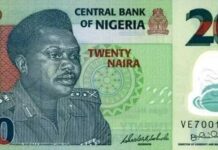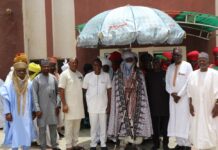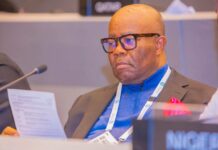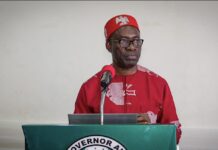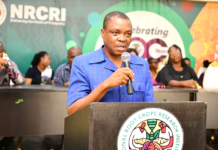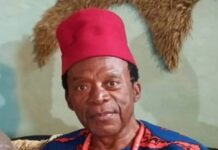Last week, the renown British based Nigerian artist, Yinka Shonibare was in Lagos, the city of his youth, to unveil his latest installation, ‘Wind Sculpture,” which is the first major Yinka Shonibare exhibition in Nigeria. I can never forget the first time I saw Shonibare’s work in an art museum. His 2003 installation, “The Scramble for Africa,” was showing in an exhibition in a University museum in a small town in the American South. I walked into one of the few rooms in the gallery and was confronted by Shonibare’s, piece. It consisted of 14 life sized fiberglass mannequin figures who seem to be European men, dressed in suits made out of Dutch wax printed cotton, what we, who forget that the material is sourced from Europe, might commonly just call Ankara, or more simplistically, African print.
The figures of the men are headless and they are sitting around a large substantially built wooden table that has a large map of Africa on it. The map is divided into sections that the men are claiming for their respective countries. Shonibare was depicting the Berlin Conference; the historical late 19th century gathering that regulated European colonization and trade in Africa.
But through this depiction he was also speaking to American Imperialism and “ the need in the West for resources such as oil and how this pre-empts the annexation of different parts of the world.” To say that “The Scramble for Africa” is an arresting and striking art installation is a disservice. One has to see it in person to understand the power it has to evoke a range of emotions and contemplations about the colonial history of Africa and the struggles of postcolonial African identity and cultural ownership.
Through his art, Shonibare continues to explore notions of identity and the shaping of cultural narratives, all of which have some bearing on political and social ideologies. His work continues to be another conversation partner in the discourse of African Aesthetics and the many branches of it made even more complicated by transnational paradigms and the effects of globalization. Like any serious artist, Shonibare’s work is multilayered and speaks beyond the immediate visuals. The word ‘aesthetic’ derived from a Greek word relating to perception, by the senses or by the mind.
So often we think of aesthetics as that relating only to perceptions of beauty but I’ve often gone back to Chinua Achebe’s definition of an aesthetic as “those qualities of excellence which culture discerns from its works of art.” In 1980, Achebe was part of a public dialogue about the politics of art. He argued that artists are makers of aesthetics and aesthetics must change according to one’s ongoing relationship with the world, socially and politically. The African aesthetic will change as our standards of excellence change as we continually negotiate our engagement with the larger world.
I imagine that this idea of a changing aesthetic that is dependent on how a culture determines its notions of excellence cannot just apply to artists. If aesthetics is primarily about perception by the senses AND the mind, then we are all somewhat obliged as citizens of the continent to pay attention to the prescribed aesthetics, perceptions we buy into. It is hard to deny that we are still as a continent negotiating the effects of colonialism and post colonialism, and the appropriation and commodification of many African cultural aesthetics.
But within these negotiations aren’t we are responsible for remembering and reincorporating particular aesthetics indigenous to our cultures and traditions, reclaiming them even? Aren’t we responsible for constantly rethinking and renegotiating what outsiders suggest are the worthy aesthetics to play out in our fashion, our music, our art, our tech development projects and our varied entrepreneurial startups across sectors? Whether we acknowledge it or not, the aesthetics we buy into will be narrated through the multiple ways we engage the world through our various sectors. It will speak to what we value, to whom we value and to how we imagine ourselves in the world. Sometimes I think we still seem to struggle deeply with the idea of being proudly African for African sake, not because the world tells us when it is or isn’t time to embrace Africa and what the African has to offer.
Just last month The New York Times published an article called “‘Africa Rising’? ‘Africa Reeling’ May Be More Fitting Now.” Those beyond the continent will never stop wanting to have the definitive word on Africa’s future and on what Africa has to contribute on a global scale. There will always be some variation of a scramble for Africa. As a continent and as a people we are far from perfect. But as our artists and writers so powerfully remind us, we are also makers of aesthetics. We are also writers of our own narratives.
Source: The Guardian









